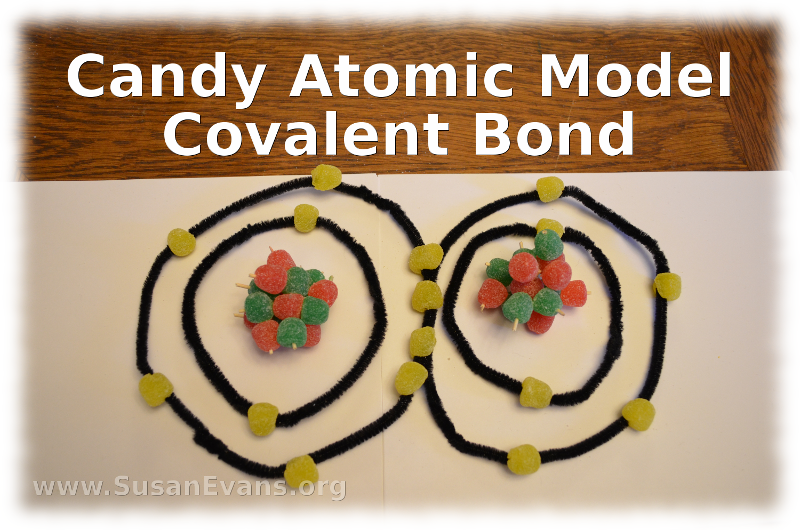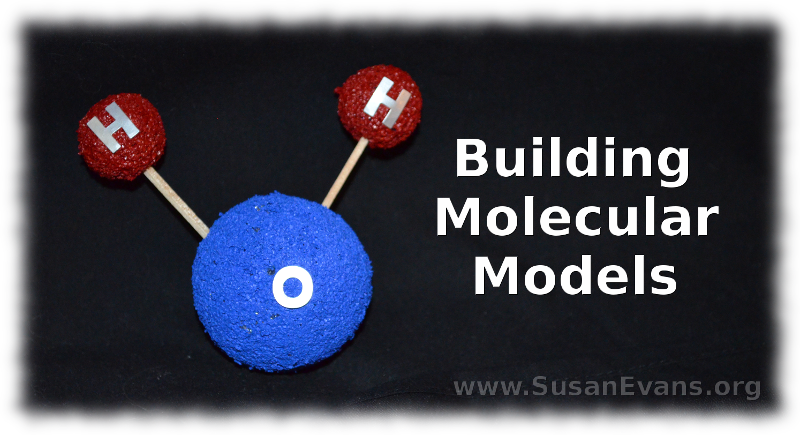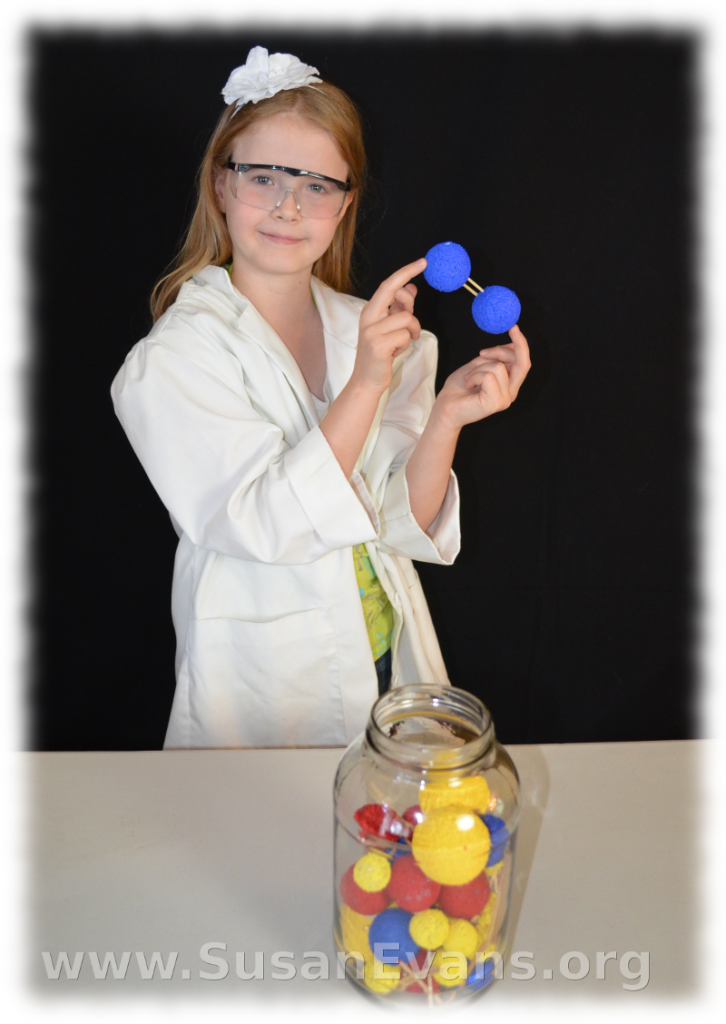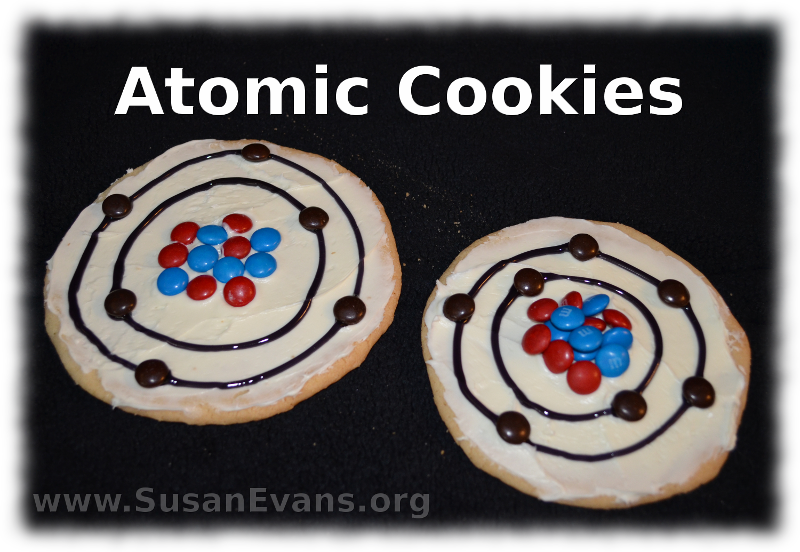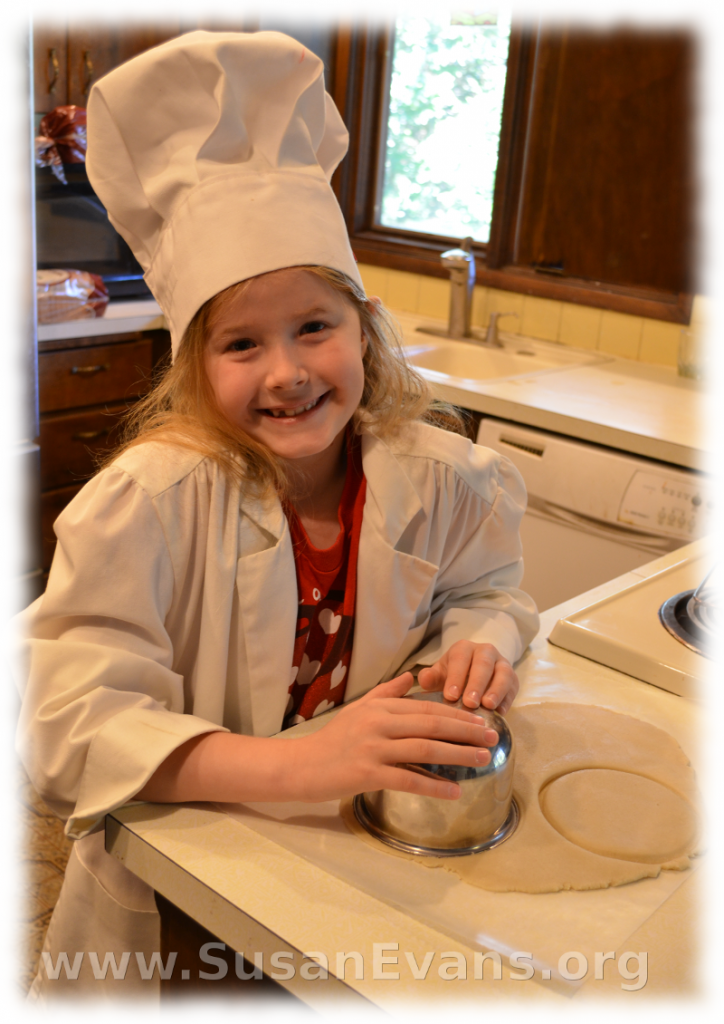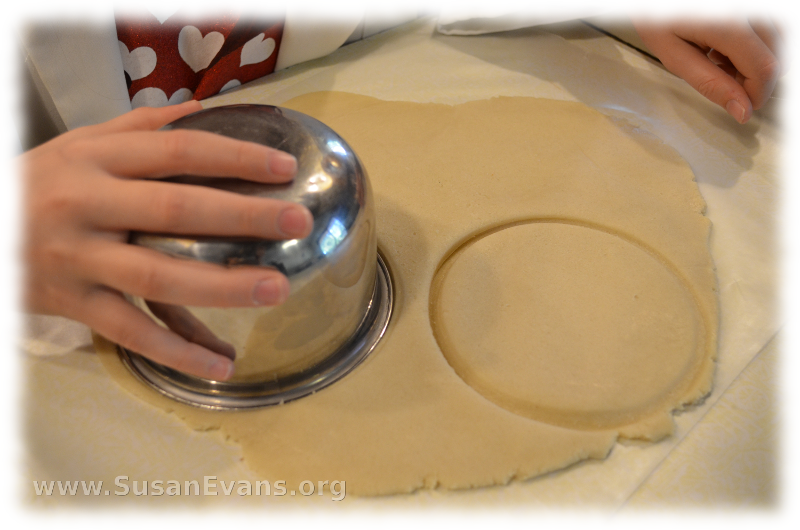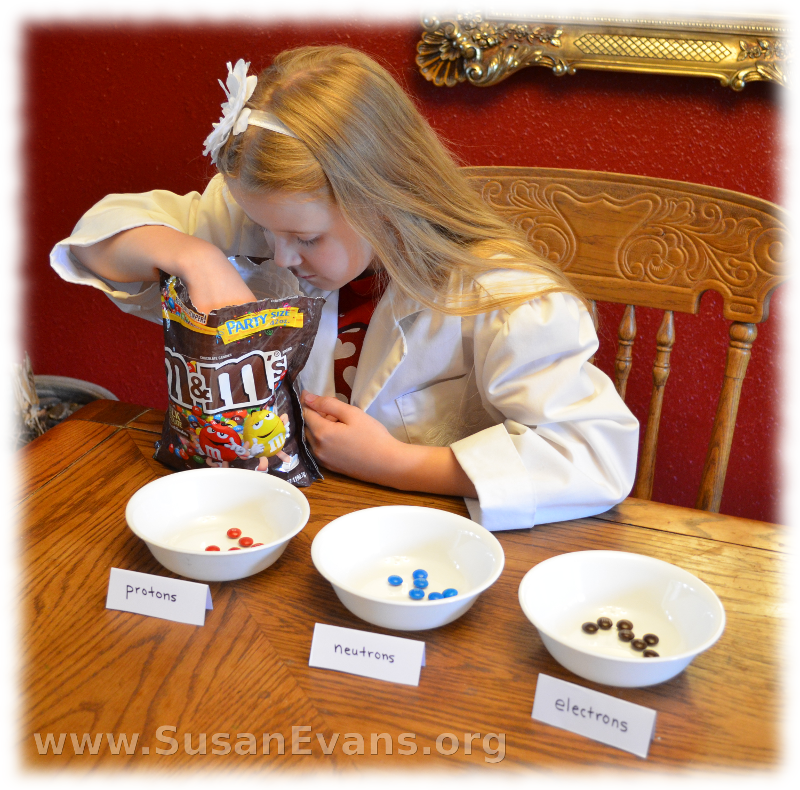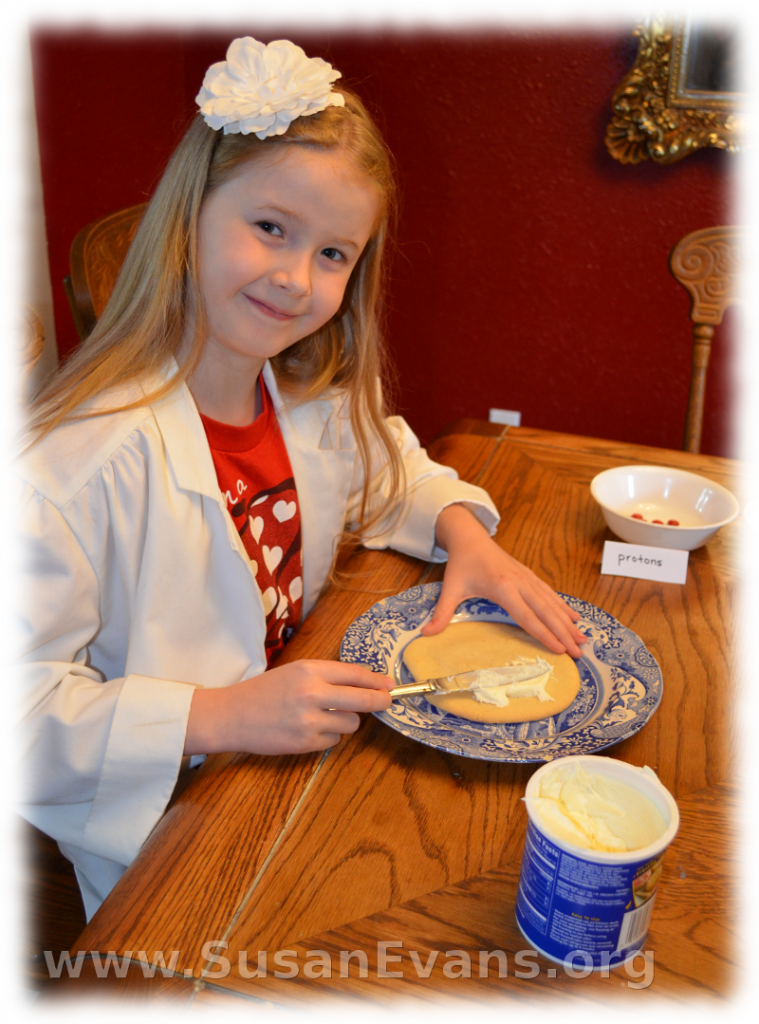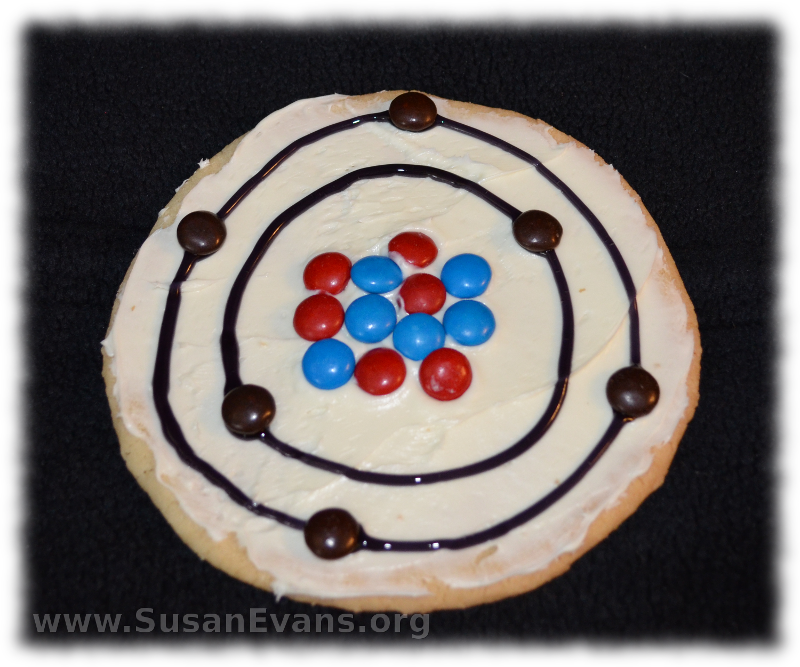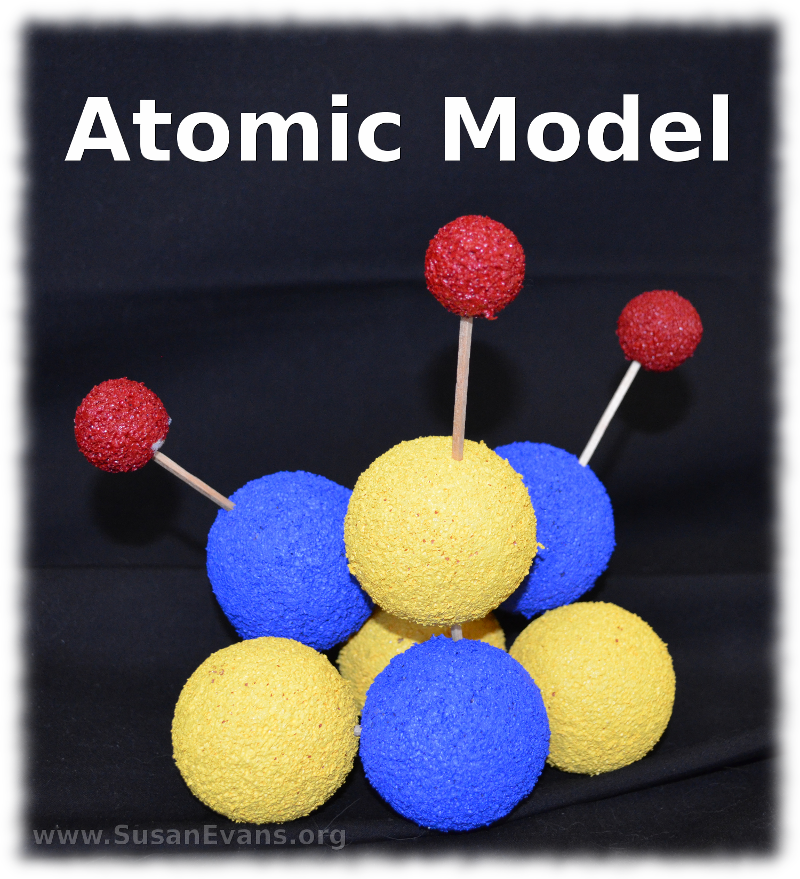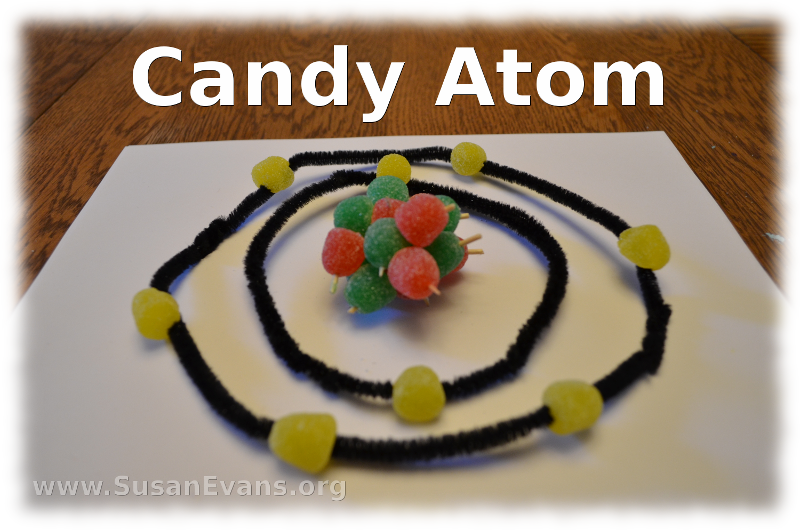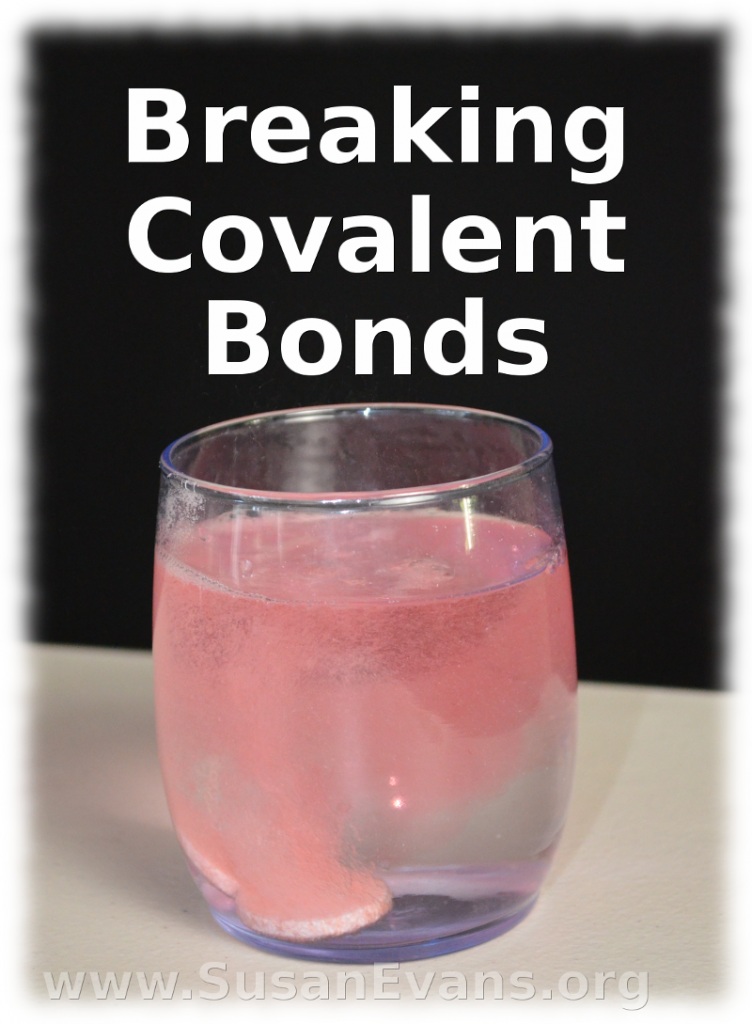 This post contains affiliate links. I was compensated for my work in writing this post.
This post contains affiliate links. I was compensated for my work in writing this post.
First I am going to explain what covalent bonds are, and then we will be breaking covalent bonds in a fun experiment. We are using Christian Kids Explore Chemistry by Bright Ideas Press to learn about ionic and covalent bonds. I explain the difference between these two bonds in the video at the bottom of this blog post. I use candy to explain the bonds.
You can make the candy Oxygen atoms by attaching 6 green gumdrops and 6 red gumdrops to represent the protons and neutrons in each atom. You will need 6 yellow electron gumdrops as well. Attach them to the pipe-cleaner circles, which are made by twisting two pipe cleaners together.
Now make sure that each Oxygen atom is sharing two of its electrons with the Oxygen next to it. You will see a total of two covalent bonds (4 electrons are being shared altogether, because each atom is sharing 2 electrons). Covalent means sharing. The atoms are sharing electrons.
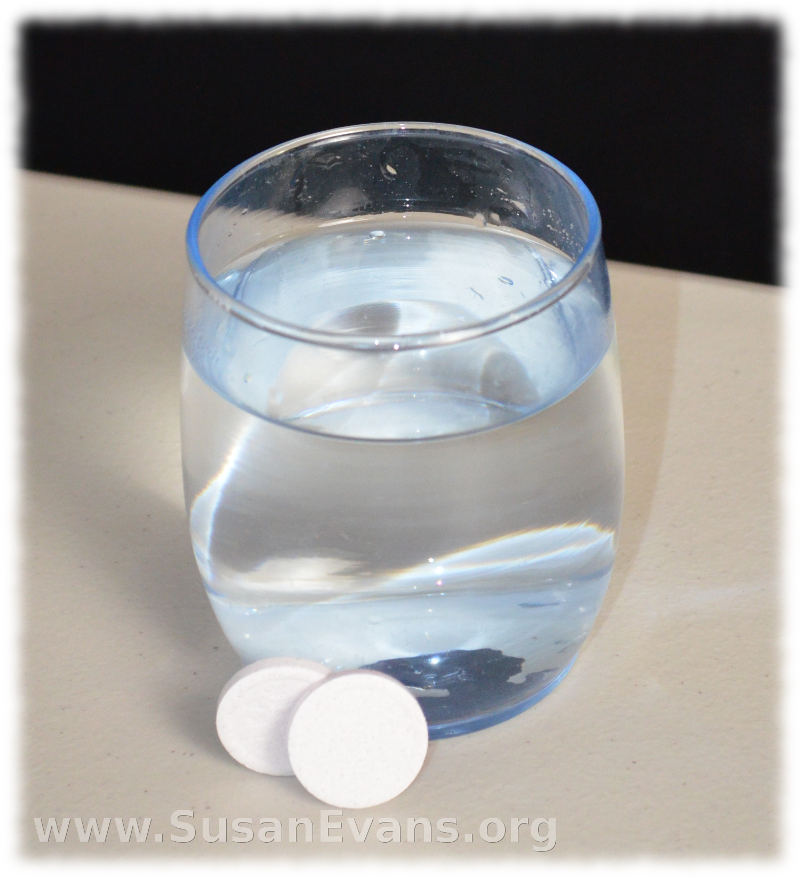 So how do we break this sharing? How to we break a covalent bond?
So how do we break this sharing? How to we break a covalent bond?
We can do this easily by plopping two Alka Seltzer tablets into a glass of water. The water causes the covalent bonds to be broken apart, and the result is that carbon dioxide is produced in the form of bubbles.
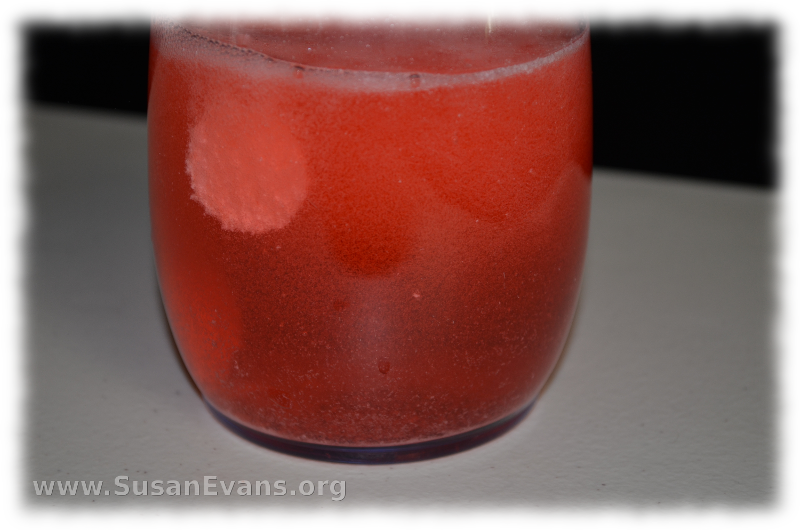 Take a look at how we performed this experiment involving breaking covalent bonds:
Take a look at how we performed this experiment involving breaking covalent bonds:
